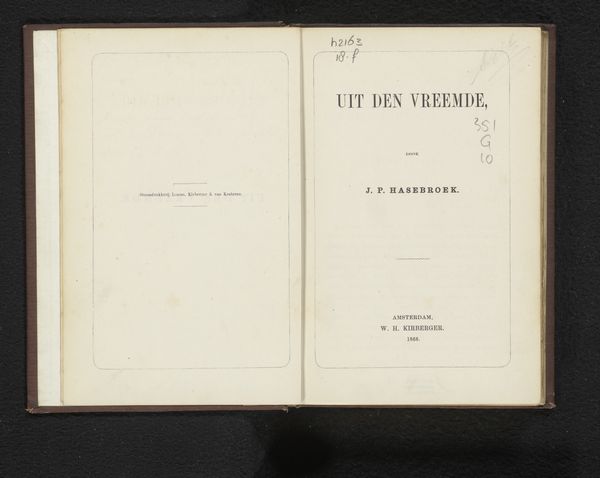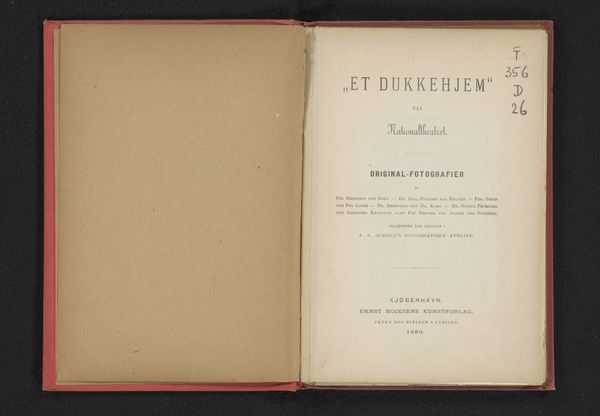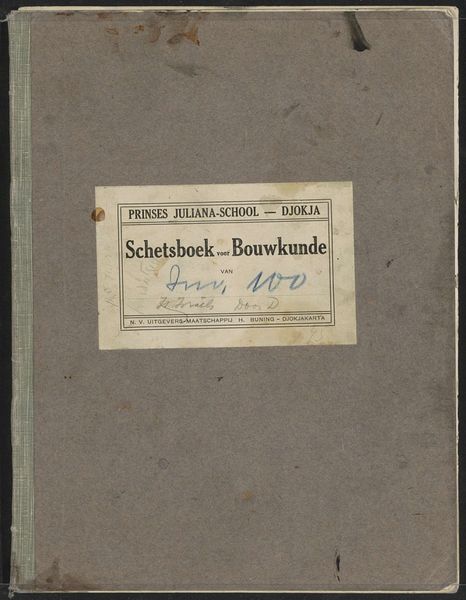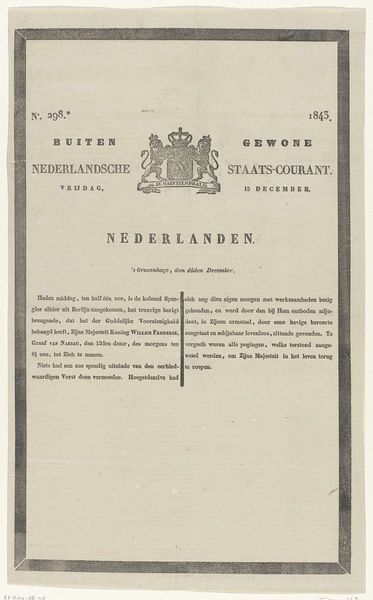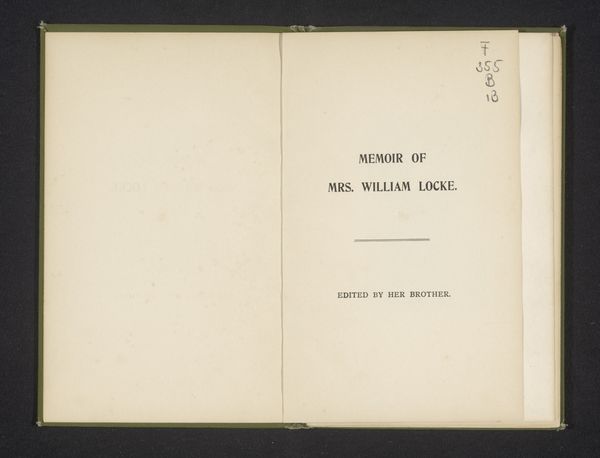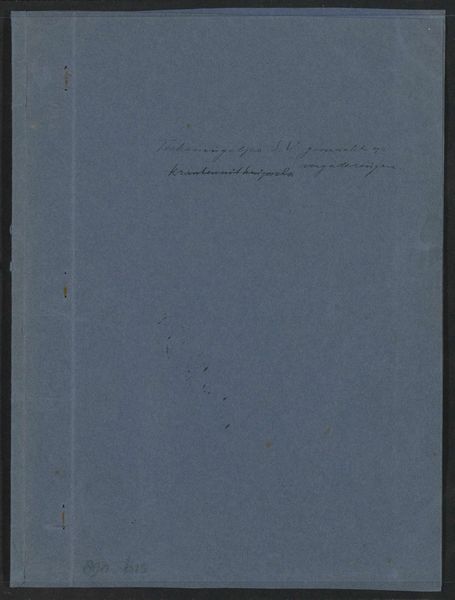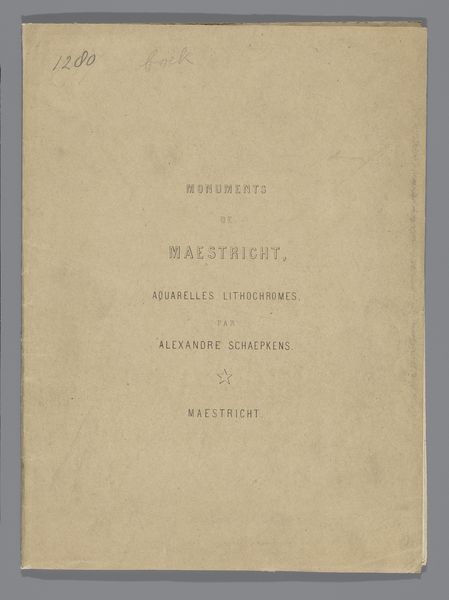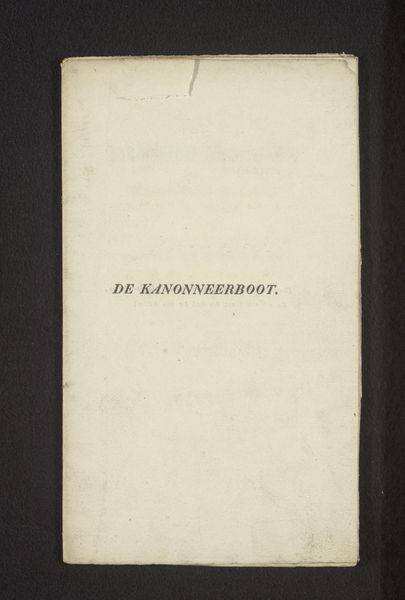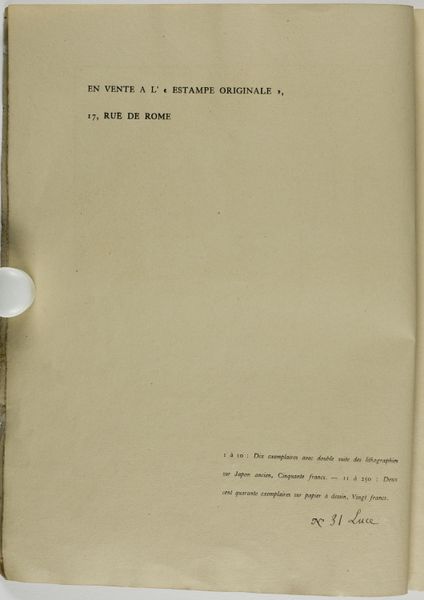
print, textile, paper
# print
#
textile
#
paper
Dimensions: height 290 mm, width 188 mm, height 290 mm, width 366 mm
Copyright: Rijks Museum: Open Domain
Editor: This is "Voorbericht bij De Klooster-Orden in Nederland" by W.J. Hofdijk, dating from 1865 to 1874. It appears to be a printed title page, likely on paper, maybe with textile involvement considering the age and presumed binding. What do you see when you look at this from a curatorial perspective? Curator: The seeming simplicity here is precisely what fascinates me. Consider the paper itself – its quality, its age, and the methods of its production. Was it machine-made or hand-laid? Understanding the labor involved in creating the material upon which the text is printed helps us connect to the social context of its creation. The print itself, the ink, the typeface—these were carefully chosen for a specific readership. Editor: That's a perspective I hadn't considered. It seems very straightforward; the title itself being “About the Cloister Orders in the Netherlands.” Why focus so much on the materiality? Curator: Because the act of printing wasn't a neutral one! Access to print, the choice of typography, even the paper stock—these were all indicators of status and intended audience. Think about the political and social forces at play in the Netherlands during this period. What does the use of specific materials imply about the production, distribution, and, ultimately, the consumption of this text about monastic orders? What were the restrictions placed upon the producers to create? Editor: So, by looking at the materials, we're not just seeing a title page; we're uncovering the conditions under which this information was made available and to whom. The quality of the print speaks to accessibility for a potentially limited audience. Curator: Exactly! We must look past the surface to examine the complex processes and the socio-economic factors embedded within it. Understanding these helps contextualize the subject it attempts to depict. Editor: That's a much deeper dive than I initially anticipated, giving a unique voice and making the audience engage more. Curator: Indeed, by acknowledging materiality we move beyond just admiring the content and into interrogating the entire apparatus behind art's creation.
Comments
No comments
Be the first to comment and join the conversation on the ultimate creative platform.

